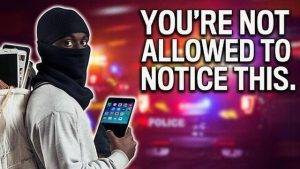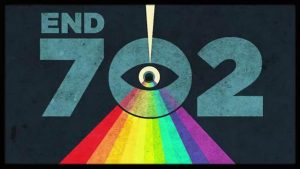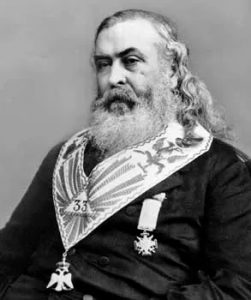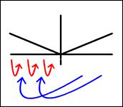“Nicaragua Betrayed” Summary— Chapter 1: The Tragedy of '72 — Earthquake
by Edward Ulrich
News of Interest.TV
February 8, 2011
This chapter describes Anastasio Somoza’s efforts while being in charge of the relief and reconstruction efforts for the city of Managua after it was destroyed by a devastating earthquake in 1972. It is explained how his efforts were able to effectively manage the situation and head off potential ensuing chaos, despite efforts of corrupt political opposition including people associated with the U.S. government who attempted to use the disaster to slander and disempower Somoza’s efforts.
Following are key points from the chapter:
— Nicaragua has a history of turbulence, but in the past forty years it has had a stable government, currency, and individual prosperity— that set it apart from most other countries of Central and South America and it made many foreign investors want to invest in the country.
— A massive earthquake struck Managua on midnight of December 22nd 1972 in which ten thousand people died and 90 percent of the homes were totally destroyed. 45,000 people were without homes, food, or water. Fires then broke out and the city was in flames at the break of morning because the fire fighting equipment had been buried under crumbled buildings. Most major government buildings were destroyed.
— Currently as the head of Nicaragua’s Guardia Nacional (National Guard), Anastasio Somoza issued a message of distress to the world, and an outpouring of international response occurred as a result.
— Somoza explains that later some of his political enemies attempted to make false accusations that the international relief was being exploited by him for his own personal gain, prompting a U.S. House of Representatives subcommittee to be formed to investigate, which found Somoza to be entirely innocent in the matter, saying: “Since the 1972 earthquake, 28 major audits, two separate Congressional staff surveys, and a General Accounting Office report on reconstruction activities have been completed. We are pleased to note that no diversion or misuse of official U.S. assistance has been revealed by these reports.”
— Immediately after the earthquake, Somoza was made the Military governor of the city of Managua and he declared martial law. He was entirely in charge of the relief and reconstruction efforts for the earthquake. Initially Somoza ran into opposition from various organizations such as the International Red Cross, the Catholic Church, and various business groups and service clubs, but later most leaders of opposition parties publicly praised Somoza for his handling of the disaster, except for ones who were later shown to be corrupt.
— Somoza was able to initially gather military and law enforcement officials to keep order despite most of them initially abandoning their posts to check on their families, and he then put together an emergency committee of 300 people representing every social and economic level in Managua, which would then meet and direct the rescue operations over the next 45 days.
— The Committee was worried about an epidemic due to bodies of earthquake victims being everywhere, having no means to dispose of human waste, and practically without any purified water, so it was decided to evacuate the city. Experts told Somoza that it would be impossible to evacuate the 350,000 people in time due to the lack of transportation, but Somoza put out a call to the people of Managua to come forward with every car, truck, and bus that would operate, and there was such a volunteer response that it was not necessary to commandeer such vehicles despite having the authority to do so. The evacuation was completed in only two days with everyone in the city mostly going to stay with friends and family in the countryside, and others were housed and fed in primary and secondary school buildings. Throughout the relief effort, 650,000 people were fed.
— Fires raged through Managua, and the only means of extinguishing the fires was with dynamite. The entire downtown area was destroyed.
— Much bickering and backstabbing occurred from elements of the Nicaraguan political system who mostly were later shown to be corrupt, including individuals associated with the U.S. Embassy, and the Red Cross and Catholic Church threatened to cease their cooperation because they wanted to direct their own efforts, but Somoza held firm and ensured that there was unified cooperation under his direction, and thus the relief operations were a success without ensuing chaos.
— Some army officers were caught looting, and they were dismissed from their posts as a result. Somoza explains how he made sure to be on the level with his decisions, such as by not accepting certain big donations of food that he learned were then going to declared as looted and paid for by insurance companies.
— Somoza was impressed by a call from President Nixon that reinforced his views of the United States being a solid supporter of Nicaragua.
— A big priority was to rebuild the schools with loans from the World Bank, and all classrooms were rebuilt within the year. With all the businesses destroyed, Somoza created a Civil Reconstruction Corps, that employed 3,500 men to clean up the rubble. Later it was accused that these people might then to used to form a “private army” of Somoza, which prompted a visit by U.S. Senator Hatfield who then told him about the slanderous Somoza rumors: “It’s quite a different thing to hear about them and talk to them eye-ball to eye-ball.”
— Serious consideration was being given to the relocation of the entire city of Managua, but after much consultation with expert volcanologists and seismologists, it was decided to rebuild on the outskirts of Managua, which enraged many in the business and financial community due to their valuable real estate subsequently plummeting in value, and it created some enemies of Somoza who later would cause him as well as the people of Nicaragua (including themselves) much harm.
— Taxes were increased on exports that raised an additional 30 million dollars a year, which was unpopular with the business community but was extremely helpful for the rebuilding effort.
— All of the hospitals were destroyed, and medical care was a vital area that was directed by Somoza’s wife Hope.
— Somoza explains it was lucky that before the earthquake he asked for an urban study of Nicaragua because the city was growing so rapidly, and his advisors told him to establish a “land bank” where 340 acres were purchased for future use. When the U.S. set aside eleven million dollars for the construction of eleven thousand small homes, the land was already available to build on that saved much valuable time and effort. All of the homes were able to be completed before the rainy season, and they were distributed fairly, which was one of many factors growing Somoza’s support from the working class. Despite the accomplishment, the Bishop of Managua Obando Bravo broadcasted radio addresses complaining that the houses were made out of wood rather than brick and stone.
— Bishop Bravo wanted to distribute the supplies through the Church, but the churches were destroyed. Somoza being a Catholic and wanting good relations with the Church invited the Bishop to his office to show him a confidential map of the relocations of the city to determine where he wanted to place his churches, and the land would then be donated. But the Bishop never came back, however he bought a piece of land based on the maps that he later sold back to the government for $400,000.
— Another example of problems with the clergy is explained where once a ship of supplies was diverted from Vietnam to Nicaragua by the U.S., and it was transported by rail through Nicaragua. A Bishop heard about the shipment and stopped the train when it went through his area and said, “These supplies are mine,” and unloaded the train. The Ambassador then had to tell Richard Nixon, “Mr. President, I regret to inform you that the supplies you diverted to Managua from Vietnam were hijacked by a Catholic Bishop.”
— A politician named Dr. Fernando Aguero who was continually harassing Somoza was starting to hold secret meetings to stir up opposition, and he had considerable influence as being part of a three man ruling junta. Somoza then gathered evidence of his subversive activities that was so incriminating that the leaders of Aguero’s own party ousted him from being their President and also from the junta. A member of the U.S. Embassy who had been collaborating with Aguero named Mr. James Cheek then sarcastically said to Somoza, “Well General, why don’t you pull a coup d’etat, throw the junta out, and assume the presidency?” Somoza comments about thinking, “What kind of a chameleon is this man?” and about how he didn’t trust him and “wanted nothing to do with his ilk.”
— Slowly but surely segments of the city were being rebuilt and spread out on the outskirts of the old city. Many of the old destroyed buildings were never to be built again, and much of the rubble was deposited in a section of lake Managua. Somoza comments about how he vowed to himself that he would make his country a better place to live.
Purchase the book “Nicaragua Betrayed” from Amazon.com.








